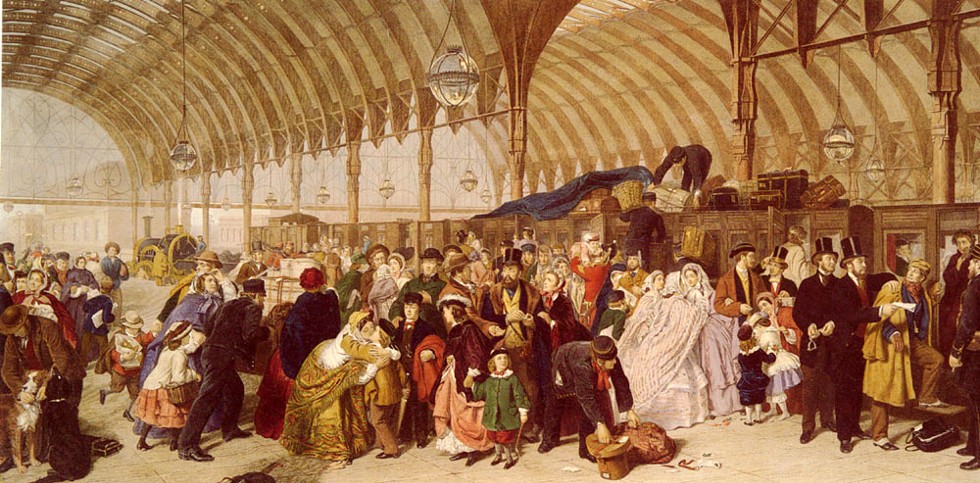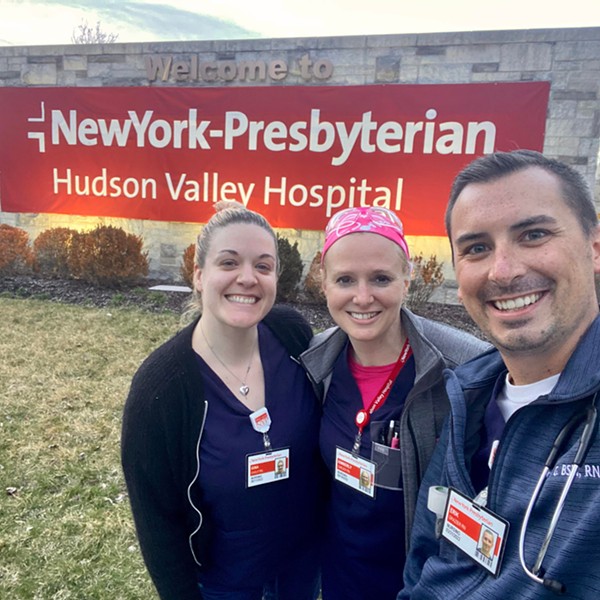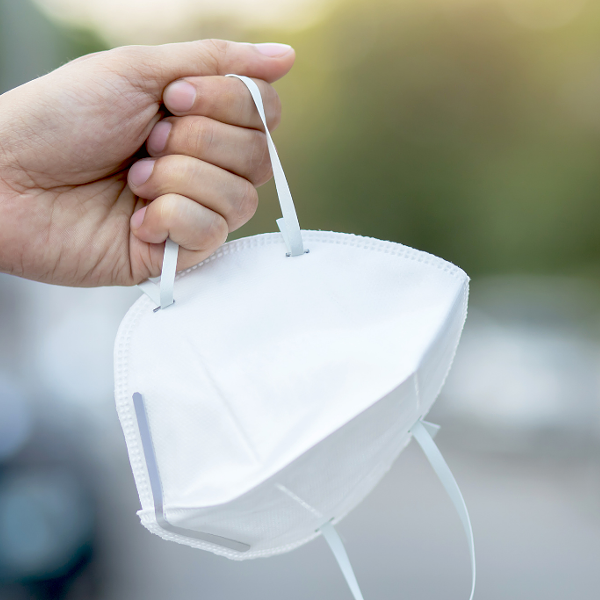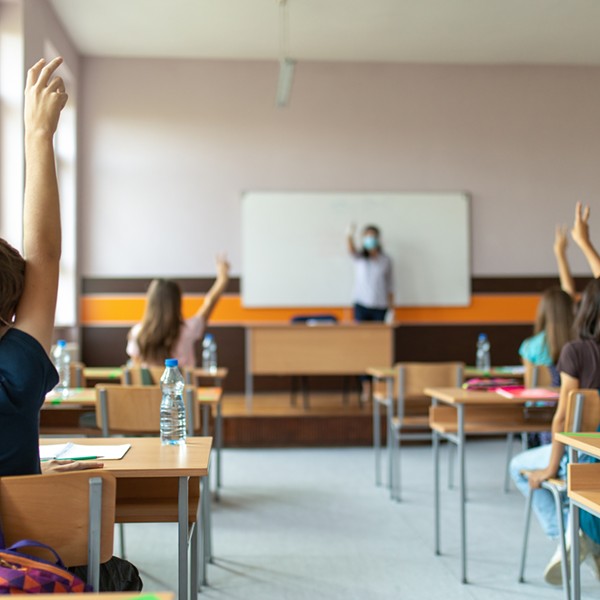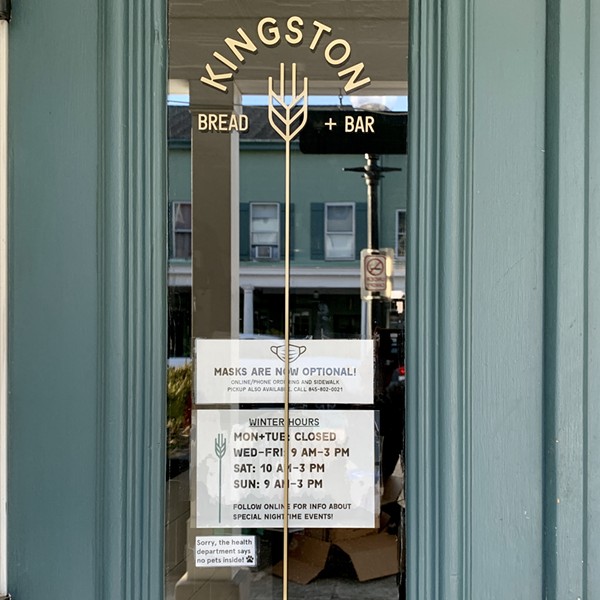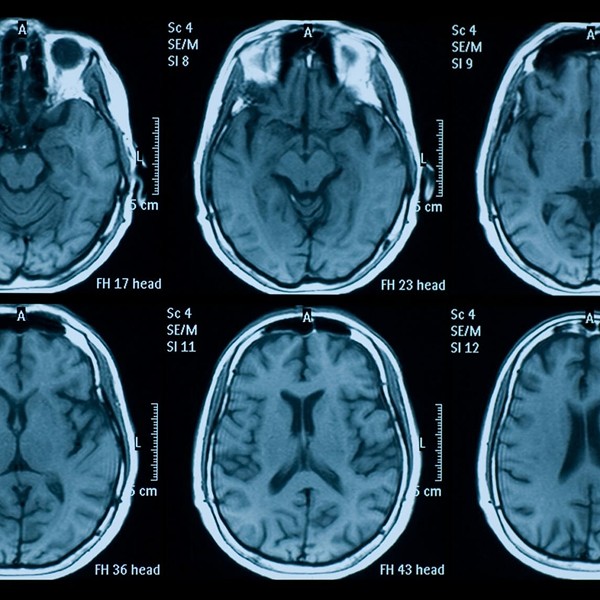This is a roundup of coronavirus news and announcements from New York State and Hudson Valley and Catskills counties published on Wednesday, June 3. Produced in collaboration with The Other Hudson Valley.
COMING INTO FOCUS
By Lissa Harris
The pandemic is giving us all a crash course in epidemiology lingo. News reporters and politicians regularly toss around terms like “R0” and “herd immunity.” We’re becoming conversant in the differences between an antibody and a diagnostic test, and we’re collectively learning why the process of vaccine development is so painfully slow.
In recent weeks, a word from the world of epidemiology has taken center stage in public pandemic discussion: “Superspreader.” Just like it sounds, a superspreader is a patient who transmits infection to a large number of others?—and the more data epidemiologists collect about how coronavirus hops from person to person, the more important the role of “superspreaders” appears to be in keeping the pandemic going.
In a New York Times op-ed published Tuesday, epidemiologists Dillon Adam and Benjamin Cowling discussed a research paper they are soon to publish, in which they conclude that superspreaders are driving most of the transmission of COVID-19. The paper is a pre-print, meaning that it has not yet been peer reviewed, an important step in vetting the results of scientific work. The urgency of the pandemic and the importance of sharing work quickly is pushing many scientists to publish pre-prints, potentially flooding the public discussion with more dubious science, but also potentially accelerating the pace of discovery.
In studying case data from Hong Kong between January 23 and April 28, Adam and Cowling found that 80 percent of the transmission was coming from just 20 percent of the cases, all involving social gatherings. An astonishing 70 percent of the people in their study who had contracted COVID-19 apparently did not pass the virus on to anyone, but a small fraction of cases were “superspreaders” with dozens of transmissions, or more.
Other scientists are coming to the same conclusion, the prominent journal Science reports. “The consistent pattern is that the most common number is zero. Most people do not transmit,” said Jamie Lloyd-Smith, another infectious disease specialist, sounding a bit like the statistics meme Spiders Georg.
It might make more sense to talk about superspreading events rather than superspreading people, Slate’s Emily Oster writes. We still don’t know a lot about why some individual cases might be more infectious than others, but we are rapidly learning more about what types of events and environments are likely to result in large numbers of infections. “It seems likely that clustering of infections is due, at least in part, to the circumstances of exposure,” Oster notes. “It is clear in the case of COVID-19 that some environments are more conducive to spreading the virus than others.”
While the prospect of a single case branching out into dozens or even hundreds of infections is alarming, if superspreading is indeed driving the pandemic, it’s also good news, Adam and Cowling say. “It’s alarming because it suggests a virus swift and efficient, and so seemingly unstoppable. But the considerable role of superspreading in this pandemic should be reassuring, too, because it also suggests a way to stop SARS-CoV-2 that is both less onerous and more effective than many of the strategies that have been pursued so far,” they write.
Focusing mainly on stopping superspreading events might be a little easier for policymakers and for communities than extended lockdowns and extreme social distancing. It would mean reorienting public policy to grapple with the environments that create a perfect storm for large-scale transmission of COVID-19.
Those environments are deeply embedded in the way we live, work, socialize—and punish. Among the places that have emerged as coronavirus hotspots are schools, prisons and jails, nursing homes, meatpacking plants and other food processing facilities, large church gatherings, weddings, funerals, and large parties. The task of reorienting society away from reliance on places and events that create opportunities for superspreading, even just until a reliable treatment or vaccine emerges, is a monumental one, especially in a time of widespread social upheaval and police crackdown. But maybe, Adam and Cowling suggest, a slightly less overwhelming task than what is currently being asked of much of America: Shelter in place, as much as you can, for as long as you can.
NEW YORK STATE
374,085 cases confirmed (1,045 new)
2,229,473 tests performed (61,642 new)
24,079 deaths (56 new)
89,995 hospitalizations (overall)
2,978 hospitalizations (current)
865 ICU admissions
New York State coronavirus page
New York State official pressroom
Hotline: (888) 364-3065
A small reprieve for summer: Restaurants in regions that have moved to Phase Two of New York’s economic reopening process may allow outdoor dining as of Thursday, June 4, Governor Andrew Cuomo announced Wednesday. That horse may be somewhat out of the barn already; outdoor dining has definitely been taking place in some areas, legal or no, and local authorities in many counties are hesitant or outright defiant about the prospect of enforcing the state’s guidelines.
There’s still plenty of confusion about what’s open and what’s not outside of New York City, especially with some regions of the state on Phase One of reopening and their neighbors across the county line already moved on to Phase Two. Cuomo has sometimes made announcements on the fly about types of businesses that can reopen, either statewide or for a particular phase, which has added to the confusion. As of Wednesday, here are the answers to a few of the more common questions upstate New Yorkers have been asking. Dentists? Yes, statewide. Hair salons and barbers? Yes, but only for regions that have moved to Phase Two, with emergency regulations that include testing every two weeks for haircutters. Nail salons and tattoo parlors? No, and we don’t know when they will be allowed to open. Children’s day camps? They’ll open on June 29; a decision hasn’t been made yet about sleepaway camps. Campgrounds and RV parks? They’re open as “essential businesses,” although they must adhere to social distancing and disinfecting protocols, and state campgrounds won’t open for overnight stays til at least June 7. Drive-in movie theaters? Yes, and they’re making something of a comeback because of the pandemic. Church services? Yes, statewide, along with gatherings for any purpose, as long as they involve no more than 10 people. Drive-in and parking lot services are allowed. “Low-risk” outdoor activities and businesses? Yes, for regions that have begun phased reopening, although a new executive order this week includes no detail on exactly what activities and businesses that description covers, and the state hasn’t been great about answering reporters’ questions on that front.
Motorists on the state Thruway can resume having three-second conversations above the roar of traffic starting Thursday as human toll collectors return. Those without E-ZPass who “cruised the Thru” from March 22 until Wednesday will have a single bill sent to their homes, which can be paid for on the Thruway Authority’s website. The toll collectors will be protected by a plexiglass shield when they return and will be required to wear facemasks.
They say in journalism, three’s a trend: Cuomo brought a Bible along to Wednesday’s briefing, joining President Donald Trump and House Speaker Nancy Pelosi in an apparent contest among high-profile pols this week for Most Awkward Biblical Photo Op. As the governor might say: This is just our opinion, and you can throw it in the garbage, but we hope Bill de Blasio doesn’t jump on board the Bible-carrying train too. Enough already.
Announced by New York State on Wednesday:
- Erie County has joined 51 other counties statewide that are cleared to resume elective surgeries and ambulatory care in hospitals. Erie County public health officials have been working to contain several localized outbreaks in the county. New York has 62 counties; four of them have no hospital.
LOWER HUDSON VALLEY
County coronavirus pages: Rockland, Westchester, Putnam
Rockland County embraced the news that outdoor dining would be allowed in Phase Two of reopening, which the Mid-Hudson region is expected to reach June 9. County executive Ed Day encouraged residents to consider visiting local restaurants upon their reopening.
Westchester County executive George Latimer gave his Wednesday briefing from the site of Regent Street Senior Apartments, a senior affordable housing project currently under construction that has been exempt from shutdown under New York on PAUSE. Westchester County is seeking applications from potential residents for the development’s 34 one- and two-bedroom units, to be selected by lottery. The deadline for applying is Monday, June 15. “The work of county government has not come to a halt because we are dealing with the public pandemic,” Latimer said. “Because this was an essential project, 100 percent affordable housing, the construction process continued.”
MID-HUDSON VALLEY
County coronavirus pages: Orange, Dutchess, Ulster, Columbia
More than a dozen cadets returning to West Point in order to hear President Trump’s commencement speech June 13 tested positive for COVID-19. All 1,100 cadets were tested upon their return, and 1.5 percent tested positive, according to the military academy’s spokesman, which works out to roughly 17 cadets. None were symptomatic and all are being isolated for 10 days, followed by a milder quarantine. Trump’s insistence on holding the commencement has been criticized by some democrats.
A bipartisan coalition of county and city leaders penned a letter to Governor Cuomo on Monday asking him to reopen places of worship to help their communities heal from the collective trauma of George Floyd’s death and the subsequent protests. “Embrace these men and women of faith to help address the pent up anger, anguish and tensions. Our faith leaders can and must be a key part of healing our communities,” the letter read. The writers also asked Cuomo to allow up to 25 percent capacity at these spaces; Cuomo allowed gatherings of up to 10 people for religious purposes in late May. The leaders of Dutchess, Orange, Ulster, Rockland, and Putnam counties endorsed the proposal, as well as the mayors of Poughkeepsie, Newburgh, Beacon, Port Jervis, and Kingston.
Columbia County voters have begun sending in absentee ballots for the June 23 presidential primary, with the county Board of Elections receiving more than 2,000 ballots in one day. Every Republican and Democratic voter received an absentee ballot; anyone in the state is free to vote by mail-in ballot by checking the “temporary illness box.” The county is only setting up 13 polling sites this year instead of the normal 32—many poll workers were uncomfortable manning the stations, according to BOE commissioner Ken Dow, forcing the county to consolidate sites. Voters should be getting postcards in the mail pointing them to their polling site.
School budget votes and board elections are being conducted by mail statewide next week, and all ballots must be received by June 9. NTS Data, a company hired by several local districts to print and mail the ballots, is behind on the job due to a failed delivery of millions of envelopes, Patch reports; the printer told the district that the issue was “very similar to what happened with toilet paper and hand sanitizer in recent months but on a commercial level.” State senator Pete Harckham, who represents the 40th District, has introduced legislation that would extend the date for receiving ballots for school and library elections until June 16. George Stone, superintendent for the Lakeland Central School District, called the state’s order to hold elections by mail on short notice an “unfunded mandate” with a cost in the tens of thousands of dollars per district. “There truly appears to be an insensitivity to the needs or critically important functions of school districts across this state,” he said.
The Dutchess County Fair, scheduled to run August 25 to 30, has been canceled, the organizers announced Wednesday.
An item we missed last week: Trailways restarted bus service between Kingston and New York City on June 1, on a limited schedule. Riders are required to wear face masks and maintain social distancing.
CATSKILLS
County coronavirus pages: Sullivan, Delaware, Greene, Schoharie
In the more rural parts of New York State, mask-wearing has become such a political hot-button issue that business owners and employees are fearful for their safety if they ask customers to wear masks. In a convenience store in Deposit last week, two customers spit on and attacked employees after refusing to wear masks, an incident that ended with a cashier in the hospital and assault charges filed. Susan Barnett, who wrote about the incident for the Walton Reporter and Hudson Valley One, sums it up pretty succinctly: “What the hell is going on with us?”
Schoharie County Public Health director Amy Gildemeister said in a Tuesday Zoom meeting in which county officials took questions about the reopening process that she hoped that in cases where businesses were not complying with emergency pandemic guidelines, local law enforcement would serve as “peacemakers” rather than being punitive. So far, the state has issued thousands of warnings and cease-and-desist letters, but there has been little punitive enforcement of businesses flouting pandemic law; the recent suspension of the Hudson Brewing Company’s liquor license by the state, after warnings from local officials, is a notable local exception. A Saugerties auction house also received a cease-and-desist notice from the town building department in May, after operating in defiance of shutdown and posting signs on the door that told customers they did not need to adhere to mask and social distancing guidelines. In Kingston, a barber who was illegally cutting hair out of his home tested positive for COVID-19 in mid-May, prompting Ulster County to issue a vague public warning, but although county district attorney Dave Clegg has launched an investigation into the case, no charges were apparently filed.
The Sullivan County Democrat is reviewing the budgets for school districts in the area in a two-part series; Tri-Valley, Port Jervis, Sullivan West, and Monticello are highlighted in the first part. Sullivan West is encouraging voters to drop their ballots off in person because of a delay in mailing ballots to voters; this issue has apparently affected other school districts as well, so check with your local school district to see if they are accepting drop-off ballots.
Active cases of COVID-19 in Greene County dropped to 30 on Wednesday as the virus seemed to ebb in the area. The county held two drive-up clinics in May, testing 135 residents; only three of the test results came back positive. The county has had 299 cumulative COVID-19 cases and 18 deaths.
PHASING IN
OF INTEREST?
The River has a guide on where, how, and when to get tested for the coronavirus in the Hudson Valley and Catskills. We also have a regularly updated list of resources on our website. To read more of our daily news roundups, visit our coronavirus page.
The River is collaborating with WGXC to announce these updates over the air. To listen, tune in to 90.7 FM at midnight, 5am, 7am, or 9am, or visit the audio archive online.
La Voz, una revista de cultura y noticias del Valle de Hudson en español, está traduciendo estos resúmenes y co-publicandolos en su página web. Leyendo aqui. También puede escuchar actualizaciones diarias por audio en el show “La Voz con Mariel Fiori” en Radio Kingston.







